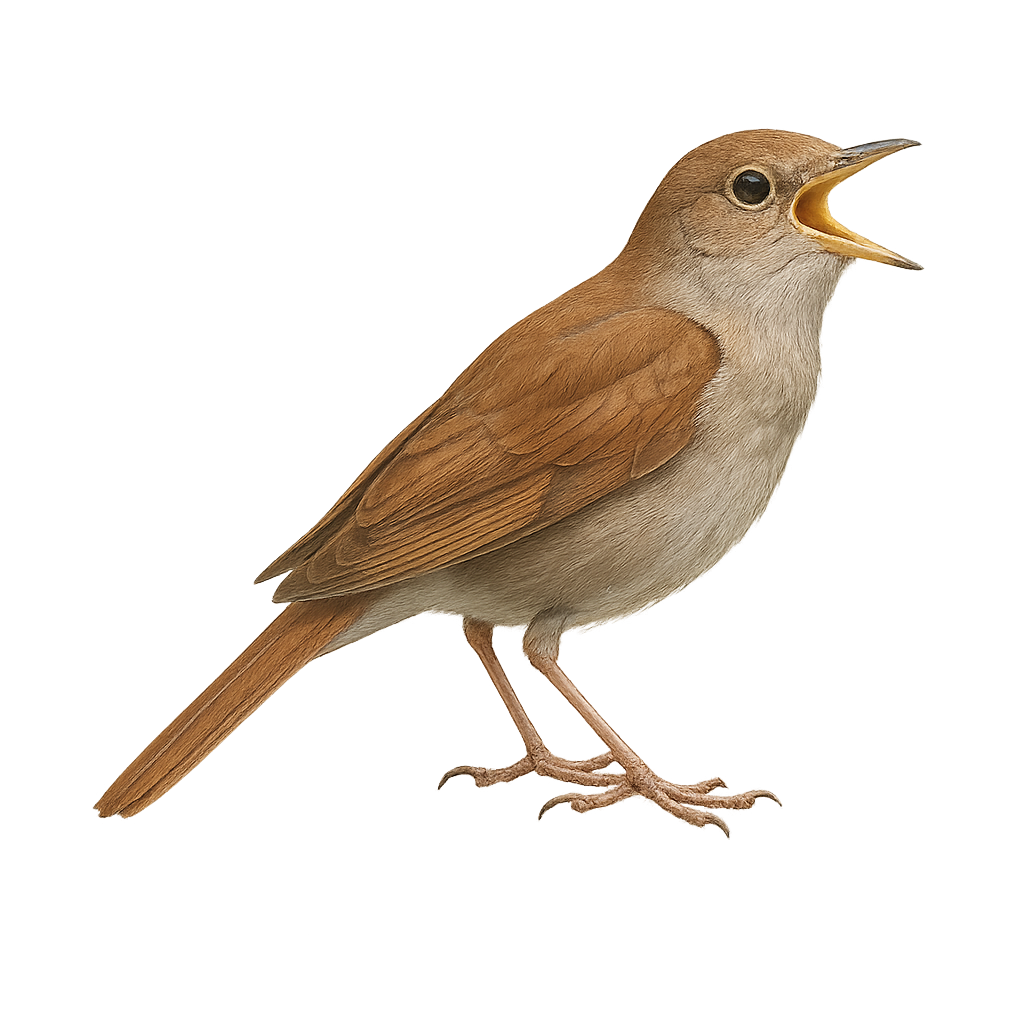Your wildlife photography guide.
Explore the nightingale in detail, study its behavior, prepare your shots.
Where to observe and photograph the nightingale in the wild
Learn where and when to spot the nightingale in the wild, how to identify the species based on distinctive features, and what natural environments it inhabits. The WildlifePhotographer app offers tailored photography tips that reflect the nightingale’s behavior, helping you capture better wildlife images. Explore the full species profile for key information including description, habitat, active periods, and approach techniques.
Nightingale
Scientific name: Luscinia megarhynchos

IUCN Status: Least Concern
Family: SILVICOLIDAE
Group: Birds
Sensitivity to human approach: Suspicious
Minimum approach distance: 20 m
Courtship display: April to June
Incubation: 13-14 jours
Hatchings: April to July
Habitat:
Woodlands, thickets, gardens
Activity period :
Mainly active at night, generally discreet during the day.
Identification and description:
The nightingale is a small passerine bird known for its melodious and powerful song, found primarily in woodlands, thickets, and gardens across Europe and Asia. It is easily recognized by its brown-russet plumage and light belly, as well as its relatively short beak. The nightingale is especially famous for its song, which is particularly vibrant and long, especially during the breeding season. It prefers dense and well-hidden habitats to feed on insects and worms.
Recommended lens:
600 mm – adjust based on distance, desired framing (portrait or habitat), and approach conditions.
Photography tips:
Photograph the nightingale using a telephoto lens to capture its furtive movements and singing behavior. It is best to photograph early in the morning or late in the afternoon when the light is soft and the bird is more active. Be ready to capture a moment when it sings from a perch or moves through dense vegetation.
The WildlifePhotographer App is coming soon!
Be the first to explore the best nature spots, track rutting seasons, log your observations, and observe more wildlife.
Already 1 431 wildlife lovers subscribed worldwide

